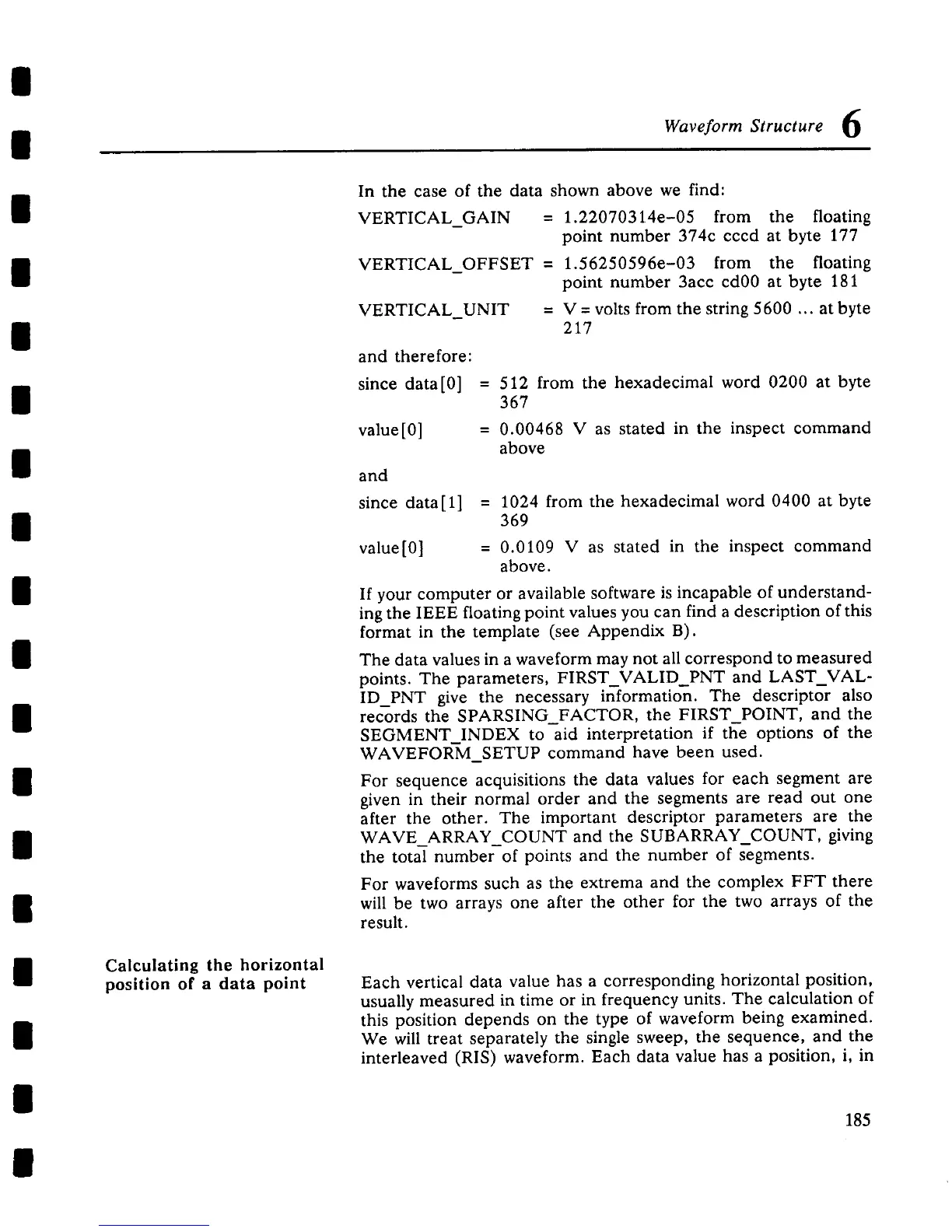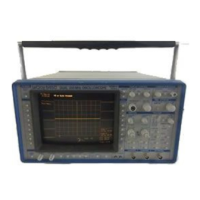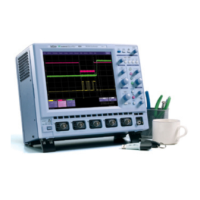Wave form Structure 6
Calculating the horizontal
position of a data point
In the case of the data shown above we find:
VERTICAL GAIN = 1.22070314e-05 from the floating
point number 374c cccd at byte 177
VERTICAL_OFFSET = 1.56250596e-03 from the floating
point number 3acc cd00 at byte 181
VERTICALUNIT = V = volts from the string 5600 ... at byte
217
and therefore:
since data[0]
=
value [0]
=
and
since data[l]
=
value[0] =
512 from the hexadecimal word 0200 at byte
367
0.00468 V as stated in the inspect command
above
1024 from the hexadecimal word 0400 at byte
369
0.0109 V as stated in the inspect command
above.
If your computer or available software is incapable of understand-
ing the IEEE floating point values you can find a description of this
format in the template (see Appendix B).
The data values in a waveform may not all correspond to measured
points. The parameters, FIRST VALID PNT and LAST_VAL-
ID_PNT give the necessary information. The descriptor also
records the SPARSINQFACTOR, the FIRST_POINT, and the
SEGMENT INDEX to aid interpretation if the options of the
WAVEFORM_SETUP command have been used.
For sequence acquisitions the data values for each segment are
given in their normal order and the segments are read out one
after the other. The important descriptor parameters are the
WAVE_ARRAY_COUNT and the SUBARRAY_COUNT, giving
the total number of points and the number of segments.
For waveforms such as the extrema and the complex FFT there
will be two arrays one after the other for the two arrays of the
result.
Each vertical data value has a corresponding horizontal position,
usually measured in time or in frequency units. The calculation of
this position depends on the type of waveform being examined.
We will treat separately the single sweep, the sequence, and the
interleaved (RIS) waveform. Each data value has a position, i,
185

